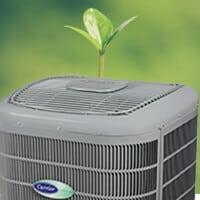Tips To Keep Bugs Out of Your AC

Bug such as cockroaches, ants, flies, spiders, and mosquitos need shelter just like us. That is why they always try to find a way into a home because they will get food and shelter. These bugs can get into your house through your air conditioning unit and can make your air conditioning malfunction, contaminating the airflow in your home. Therefore, you need to ensure that they do not get inside your home. Below are more details on how to ensure that bugs do not get into your home through your air conditioning unit.
1. Use Duct Tape
Duct tape is usually strong and waterproof. You should use it to seal cracks around your air conditioning unit through which bugs pass when getting into your house. For instance, you should use it to seal hairline crevices. However, you should only use this adhesive tape when sealing cracks that are 1 inch thick or less. You should also ensure that the surface on which you are applying the tape is dry and clean.
You can use this adhesive tape to cover gaps that the side panels of your air conditioning unit do not seal. When you use this tape, you will not have a problem adjusting these panels. Also, you can easily remove the tape in the future when there is a need to access the inside of the AC unit.
If your air conditioning unit has extenders, seal off their edges using this tape. Doing this will help keep spiders and flying bugs away.
2. Seal Your Ductwork If It’s Leaky
Bugs can get into your home through the leaks in your ductwork. Therefore, you need to seal these leaks. You can use HVAC tape or duct sealant to seal the leaks. When you decide to use HVAC tape, ensure that you buy wide enough tape to cover the leaks in your ductwork. Also, be sure that the tape you purchase sticks well and tears easily.
If you decide to use duct sealant, buy a water-based duct sealant. Such a sealant sticks on a surface well and cleans up easily. It is a paint-like, thick, pasty substance that you should apply using a caulking gun and paintbrush.
3. Use Paper Towels to Seal Holes Around Your Air Conditioning Unit
Small insects such as mosquitos can get into your room through the cracks around your air conditioning unit. To ensure that this does not happen, buy paper towels in bulk, and use them to seal these cracks. Before using the paper towels, fold them into rolls, and put them in the cracks until the gaps are completely covered. You can then use duct tape to hold the folded paper towels in place.
4. Use Caulk to Seal Gaps in Your Air Conditioning Unit
Although caulk is less elastic than regular sealants when dry, it is a good waterproof sealing material. You can use it to seal the gaps through which bugs pass when getting into your house. However, you need to ensure that you are using quality caulk that you can easily remove in the future. Rope caulk is a good choice.
Rope caulk is usually sticky, and you can easily mold it. It’s affordable and readily available at your local hardware store. You can use this kind of caulk to seal up the gaps above and below your air conditioning unit. If you experience any problems sealing these gaps, contact us.
Why You Should Let Us Deal With Your Air Conditioning Unit
If bugs are getting into your home through your air conditioning unit, let Breeze Air Conditioning take a look. We are an HVAC company located in Palm Desert, CA. Our professionals offer top-notch cooling, heating, and indoor air quality services.
When you let us deal with your air conditioning unit, we will identify the areas in and around the unit that could let bugs into your home. We will then seal these areas to keep the bugs out. We use the best sealants when it comes to covering holes and cracks around an air conditioning unit.
Bugs can damage your AC and contaminate the air inside your home. Therefore, you need to ensure that these organisms do not get into your house. In addition to helping you seal any cracks around your AC, we can also provide AC maintenance to keep your cooling system working great. Contact us for more information about our services.
Tags: AC Maintenance, Bugs in AC